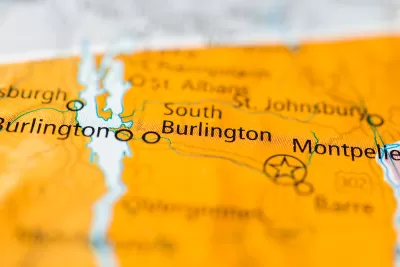Property owners argue that a new law protecting wildlife corridors amounts to an unconstitutional taking of property.

The U.S. Supreme Court could take on another case that could have rippling effects on local zoning and land use regulations. As Habib Sabet explains in The Other Paper, “The dispute stems from land use regulations passed by the city council in February 2022 that limits development in newly designated ‘habitat blocks,’ or wildlife corridors.”
Owners of a 113.8-acre parcel in South Burlington say the regulations amount to an unconstitutional seizure of their property, preventing them from developing on roughly a third of the land. “In his dismissal of the initial lawsuit, Judge Geoffrey Crawford of the U.S. District Court of Vermont wrote that, ‘in absence of a concrete plan, submitted to the DRB (Development Review Board) and a final decision from the DRB, it is not possible to tell how far the regulations encroach on the Plaintiff’s right to develop it’s [sic] property.’”
Sabet points out that even if the Supreme Court takes the case and rules in the developers’ favor, more litigation — likely years — would follow.
FULL STORY: U.S. Supreme Court to consider South Burlington land use case

Planetizen Federal Action Tracker
A weekly monitor of how Trump’s orders and actions are impacting planners and planning in America.

Chicago’s Ghost Rails
Just beneath the surface of the modern city lie the remnants of its expansive early 20th-century streetcar system.

San Antonio and Austin are Fusing Into one Massive Megaregion
The region spanning the two central Texas cities is growing fast, posing challenges for local infrastructure and water supplies.

Since Zion's Shuttles Went Electric “The Smog is Gone”
Visitors to Zion National Park can enjoy the canyon via the nation’s first fully electric park shuttle system.

Trump Distributing DOT Safety Funds at 1/10 Rate of Biden
Funds for Safe Streets and other transportation safety and equity programs are being held up by administrative reviews and conflicts with the Trump administration’s priorities.

German Cities Subsidize Taxis for Women Amid Wave of Violence
Free or low-cost taxi rides can help women navigate cities more safely, but critics say the programs don't address the root causes of violence against women.
Urban Design for Planners 1: Software Tools
This six-course series explores essential urban design concepts using open source software and equips planners with the tools they need to participate fully in the urban design process.
Planning for Universal Design
Learn the tools for implementing Universal Design in planning regulations.
planning NEXT
Appalachian Highlands Housing Partners
Mpact (founded as Rail~Volution)
City of Camden Redevelopment Agency
City of Astoria
City of Portland
City of Laramie





























